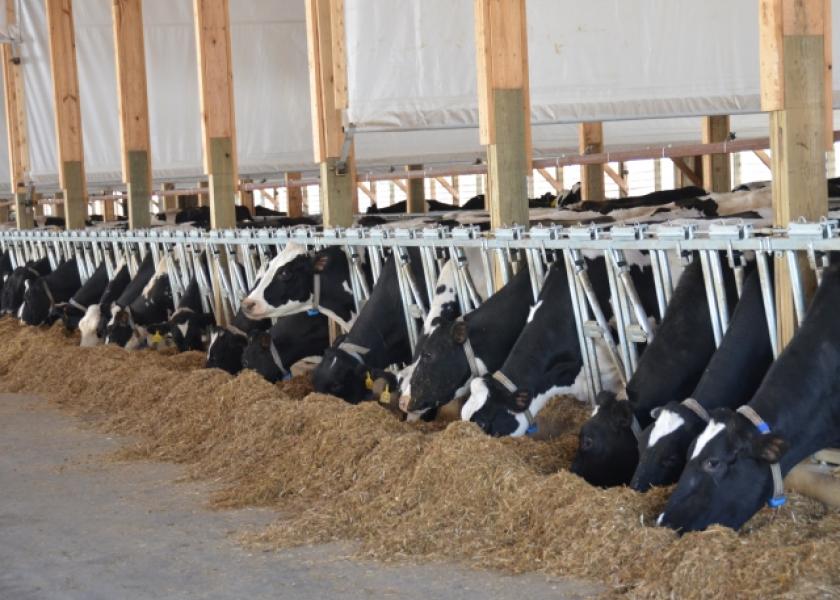HBS Avoidance Strategies

After years of studying Hemorrhagic Bowel Syndrome (HBS), nutritionist Dr. Scott Bascom still finds it to be a maddening disease.
“I still sometimes perceive that I will get to a dairy struggling with HBS and spot a glaringly obvious management issue, but the opposite is often true,” he shared. “HBS can be found amidst incredibly well-managed situations; it’s found where producers are doing most everything right.”
In fact, he said it’s common to see HBS strike early lactation cows that are producing 150 pounds of milk per day.
“That’s a classic HBS symptom, and shows why we don’t see it coming,” said Bascom. “It’s not like she was sick for weeks and we couldn’t get her back on track – she was doing wonderfully yesterday and today, she’s dead.”
Sometimes called “sudden death syndrome” or “bloody gut,” HBS is characterized by dark, tarry, and sometimes bright red, bloody feces; dehydration; and decreased feed intake. Cases are almost always acute, and are fatal more than 80% of the time. And, because it cannot be re-created in a lab setting, there is very little clinical research on the disease.
One finding that has been discovered is a connection between HBS and the mold Aspergillus fumigatus (AF). Bascom, who is Executive Technical Services Manager for Phibro Animal Health Corporation, said researchers have found 13 out of 18 cows that die of HBS are positive for AF.
While AF is fairly ubiquitous and found widely in the environment, it can be a danger to cows when it enters their circulatory system during periods of stress and sets up shop in their tissues, including intestinal sites.
The toxins secreted by the mold then inhibit the immune system’s ability to recognize, kill, and remove the mold. Eventually, the toxins overwhelm the immune system and trigger massive inflammation and hemorrhaging in the gastrointestinal tract. HBS is often initiated by a stressful event or by stress in combination with ingestion of the mold. Calving is a significant stressor, which possibly helps to explain why high-producing, early-lactation cows unfortunately often are the ones affected by HBS.
Bascom advised the following measures to diminish the opportunity for AF to become established in cows’ systems and potentially trigger HBS:
- Utilize clean feed sources – It is not possible to completely eliminate AF from the environment. But, like most molds, AF grows when exposed to air and is most prevalent in corn silage — “particularly if it’s put up poorly,” cautioned Bascom. Also, store purchased commodities in a clean, dry location to avoid mold growth promotion.
- Reduce stress – Clean, dry bedding; ample resting space; comfortable stalls; protection from the elements; effective ventilation; heat stress mitigation; and avoiding excess pen moves all are controllable factors that can prevent “layering” of stress when unavoidable insults like calving take place.
- Immune support – Supplemental feeding can boost a herd’s immune status through nutritional specialty products like OmniGen® that help cows respond better to AF once it takes residence in their bloodstreams.
- Preventative monitoring -- Assays for detecting AF in feeds and the blood of dairy cows are available to help the producer assess herd-level exposure to the mold and the risk for HBS. Phibro also has a Dairy Stress Assessment tool that evaluates 11 common stressors on dairies, compares herds against industry standards, and helps identify and resolve stressful areas in individual herds.
The “bonus” of intentionally examining stress and working to support cows through it should not only help prevent HBS in herds, but also might positively impact udder health, fertility, and heat-stress tolerance.
For more on herd health, read:
- Transition Cows: It’s Tough Being the New Kid
- There’s a New Mastitis-Causing Pathogen in Town: Prototheca Bovis
- Exploring the Factors that Surround LDAs







